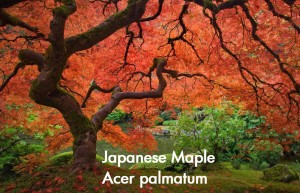 If you’re into plant sciences, there’s a lot to know about botanical nomenclature. If you’re not, most of what you need is just an easy primer on botanical plant names which includes the genus, species, variety or cultivar. Plant family is interesting and helpful too. But for starters, let’s break down what the latin words mean.
If you’re into plant sciences, there’s a lot to know about botanical nomenclature. If you’re not, most of what you need is just an easy primer on botanical plant names which includes the genus, species, variety or cultivar. Plant family is interesting and helpful too. But for starters, let’s break down what the latin words mean.
Ok, how about Japanese Maple…
Now, that’s the common name. And I know what you’re thinking. Why bother knowing the scientific names of plants, especially of a popular tree everyone knows (duh). But as I mentioned in a previous post, common names can lead you to the wrong plant. Better to speak the language universal language of plants. Ok, so..
Acer palmatum is the scientific (botanical) name.
Acer palmatum. The first word “Acer” is the genus. The genus is always capitalized. The second word “palmatum” is the species. The species is always lower case. Usually the species describes the genus. This is helpful for you and me. In this case, the species “palmatum” means “palmate” or the leaves look like the palm of your hand.

Cultivars
Here is an example of a cultivar of Acer palmatum —– Acer palmatum ‘Butterfly’
Cultivars are capitalized and put in single quotes. Sometimes a cultivar is listed with the abbreviation cv. This particular cultivar, ‘Butterfly’ is wonderful because it has variegated leaves. I’m a big fan of variegated leaves. Fortunately, so was the plant breeder (or so you’d think). Cultivars, as you can see, are typically bred to have particular desirable characteristic. In the case of Japanese Maples most are bred for leaf shape and color; including the color of bark.
This is different than a variety. Below, is an example of a variety of Acer palmatum.
Acer palmatum var. dissectum
Usually for a variety you will either see the abbreviated “var.” or sometimes “v.” There are times when neither abbreviation is used. But the variety will simply follow the species. It is also not capitalized.
What’s a variety?
It’s a subpopulation of a species created in nature. So it’s the real deal. Nothing bred here.
Not all species have subspecies or varieties. In the case of example: Acer palmatum var. dissectum – the common name I think of is: Dissected Japanese Maple. It’s the leaf type; it’s finely dissected.
A couple more examples…
Acer palmatum var. dissectum ‘Crimson Queen’
Acer palmatum var. dissectum ‘Viridis’
With the 2-examples above, you see all of it. (1) genus; (2) species; (3) variety; (4) cultivar. The cultivars (capitalized and single quotes) follows the variety.
Remember the variety may not always have an abbreviation. But it will directly follow the “species.” As for the cultivar, it will either follow the variety, if there is one, or follow the species.
Of the 2 cultivars – ‘Crimson Queen’ and ‘Viridis’ – if I wanted to buy a Dissected Leaf Japanese Maple with green foliage any guesses which cultivar? Yup. ‘Viridis.’ How about crimson foliage? Yup. ‘Crimson Queen.’
So, besides having lots of fun with plant language. Wait until you unintentionally remember a few and have a leg up in Scrabble!
Happy gardening,
![]()
It’s FREE and FUN and GOOD FOR YOUR HEALTH!!!